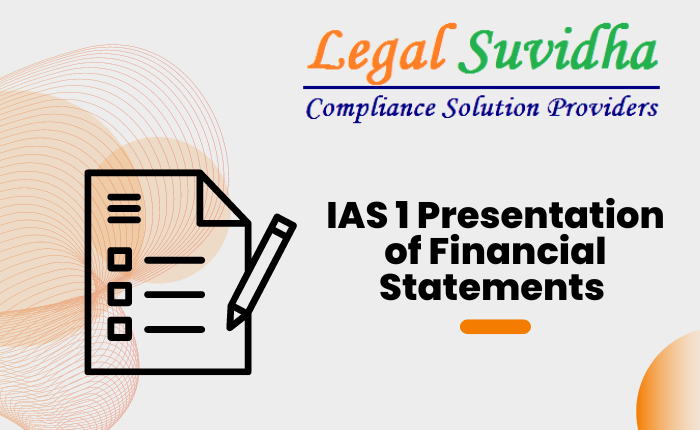The objective of IAS 1 (2007):
– IAS 1 (2007) aims to establish a framework for presenting general-purpose financial statements.
– The primary goal is to ensure comparability across different periods and other entities’ financial statements.
Scope of Application:
– IAS 1 applies to all general-purpose financial statements prepared according to International Financial Reporting Standards (IFRSs).
– These statements serve users without specific information needs.
The objective of Financial Statements:
– General-purpose financial statements offer information about:
– Financial position
– Financial performance
– Cash flows of an entity
– The information assists a broad range of users in making economic decisions.
Components of Financial Statements:
– A complete set of financial statements includes:
– Statement of financial position (balance sheet)
– Statement of profit or loss and other comprehensive income
– Statement of changes in equity
– Statement of cash flows
– Notes providing explanations and policies
– Comparative information for standard compliance
Fair Presentation and Compliance with IFRSs:
– Financial statements must “fairly present” an entity’s financial position, performance, and cash flows.
– This involves faithful representation of transactional effects and conditions as per recognition criteria in the Framework.
– Application of IFRSs, with additional disclosure, ensures fair presentation.
Departure from IFRSs:
– Rarely, management might find IFRS compliance misleading.
– In such cases, a departure from IFRS is allowed with detailed disclosure of reasons and impact.
Going Concern:
– Financial statements assume the entity’s continuation as a going concern.
– If concerns arise, disclosures are necessary.
– If the entity is not a going concern, related disclosures are required.
Accrual Basis of Accounting:
– Financial statements, except cash flow data, follow an accrual basis.
Consistency of Presentation:
– Presentation and classification maintained unless new IFRS or changed circumstances warrant alteration.
Materiality and Aggregation:
– Material information influences user decisions.
– Material classes are presented separately, and immaterial items are aggregated.
– Materiality applies to all financial statement parts.
Offsetting:
– Offsetting of assets, liabilities, income, and expenses per IFRS only.
Comparative Information:
– Prior period comparison is essential for reported amounts and narrative data.
– Enhances understanding of current period financial statements.
Structure and Content of Financial Statements:
– Financial statements and notes clearly identified.
– Notes ordered systematically, covering policies, disclosures, and supporting information.
Statement of Financial Position (Balance Sheet) – Classification:
– Normally present classified balance sheet (financial position) with current and non-current assets and liabilities.
– If reliable, liquidity-based presentation can replace current/non-current classification.
– For assets/liabilities with both long-term and short-term amounts, notes should differentiate.
– Current assets: realized within the operating cycle, held for trading, or <12 months.
– Non-current assets: all other.
– Current liabilities: settled within the operating cycle, held for trading, or <12 months.
– Non-current liabilities: all other.
– Long-term debt refinanced under the existing facility is non-current.
– Liability due to breach is current unless the lender agreed to a grace period of>12 months.
Line Items:
– List of items for balance sheet presentation including property, investments, assets for sale, etc.
– Additional line items or subtotals as needed for clear representation.
Format of Statement:
– No fixed format for balance sheet presentation.
– Asset sequence (current or non-current) and liability/equity order (current, non-current, equity) flexible.
– Net asset presentation allowed.
– Long-term financing approach (UK) acceptable.
Share Capital and Reserves:
– Disclose authorized, issued, and paid shares.
– Explain par value or no par value.
– Reconciliation of outstanding shares.
– Share rights, preferences, and limitations.
– Treasury shares details.
– Shares reserved for options/contracts.
– Purpose of equity reserves explained.
Statement of Profit or Loss and Other Comprehensive Income:
– Profit or loss and comprehensive income defined.
– Generally, all items are recognized in profit or loss unless IFRS allows otherwise.
– Examples of items recognized outside profit or loss listed.
Statement of Changes in Equity:
– Separate statement showing total comprehensive income for the period.
– Attributions to owners and non-controlling interests.
– Effects of accounting policy changes/restatements included.
– Equity components, contributions, distributions, and ownership changes displayed.
Notes to Financial Statements:
– Basis of preparation and accounting policies explained.
– IFRS-required information not elsewhere disclosed.
– Additional relevant information provided.
– Notes systematically cross-referenced.
Other Disclosures:
– Judgements apart from estimations disclosed.
– Key estimation uncertainties identified.
– Capital management info includes objectives, policies, and processes.
– For entities with puttable instruments, equity amount and repurchase details are disclosed.
– Domicile, legal form, and parent company info mentioned.
If You have any queries then connect with us at [email protected] or [email protected] & contact us & stay updated with our latest blogs & articles









